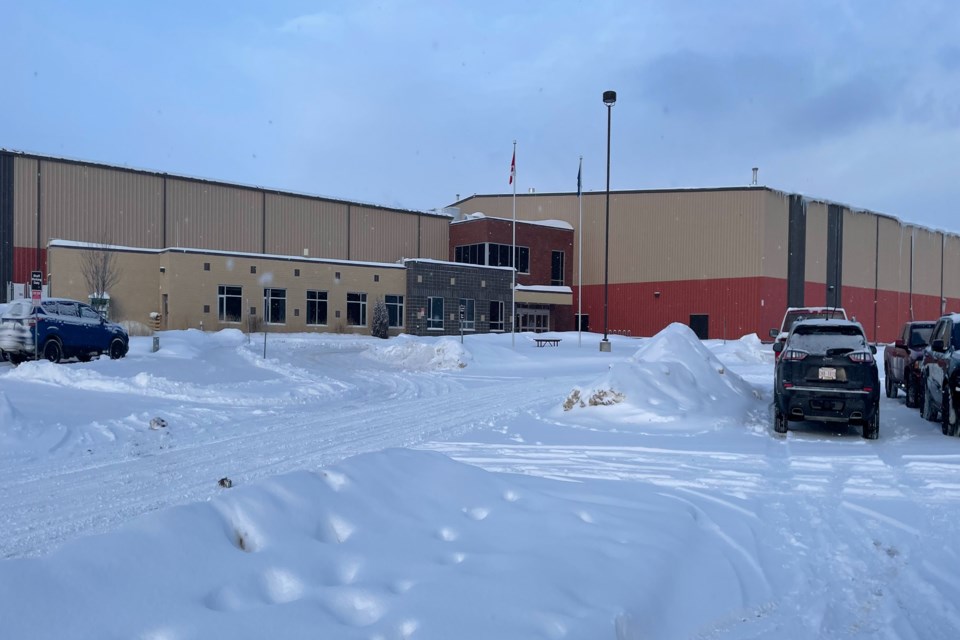ATHABASCA – From coast to coast, Canadians are paying extra on their fuel sources to heat their homes, drive their cars, or operate a small business under Canada's carbon levy – and local institutions are no exception, with arenas, the school board, and low income housing facilities all reporting steep bills at the end of 2024.
Also known as the federal fuel charge — and colloquially as a carbon tax — the levy applies to provinces that haven’t set a provincial plan in place to meet the national standard. Different fuels are taxed at different rates, depending on how many greenhouse gases are emitted when consumed. Heavier pollutants, like coal, are more expensive to burn than a lighter pollutant, like ethane.
The Athabasca Regional Multiplex, which houses a hockey rink, curling rink, swimming pool, and a fieldhouse, spent $64,000 on the carbon levy in 2023. The cost increased last year, rising to $81,500 in 2024 despite efforts to improve the energy efficiency of the building.
“It’s absolutely frustrating, especially on a community building,” said Ashtin Anderson, a county councillor and chairperson for the multiplex’s board.
“The multiplex isn’t the only facility facing it either, I know Boyle is facing it in their hockey rink and the curling club. All these different community buildings are facing very similar things.”
Carbon pricing programs are designed to encourage behavioural changes as activities get too pricy; a jacked up pick-up truck is going to produce more carbon dioxide than a Ford Lightning, and the levy can help encourage a swap, as an example.
For local institutions, the carbon levy is paid primarily on heating costs, which are tough to reduce in the northern climate.
In Alberta, the federal fuel rate is charged on any fuel source that emits carbon dioxide, which for most is a $0.14 charge per litre of gasoline, or a $0.12 charge per litre of natural gas used in a home.
It adds up quick, but households also qualify for a rebate four times a year which helps ease the burden. The federal government doesn’t keep any proceeds from the pollution pricing, giving 90 per cent back to citizens, and 10 per cent to green energy grants.
However, local institutions don't qualify for rebates and competition for these grants is fierce. The multiplex was unsuccessful in a major grant application last year, and while it’s reapplying in 2025, there’s no guarantee.
“It still costs a lot of money to operate things,” said Anderson.
“We should absolutely continue to pursue more energy efficient projects. Even if you take out the carbon tax, we still have a significant bill for utilities and anything we can do to limit that burden on our community going forward needs to be assessed.”
A burden on the vulnerable
Aspen View Public Schools (AVPS) is another local institution feeling the pressure. Since 2019, the division has paid nearly $400,000 in carbon tax, money that could’ve otherwise gone towards additional resources for students.
“Throughout the division, we’ve had to let support staff go because our budget just didn’t accommodate for them,” said AVPS chair Candy Nikipelo.
“That in turn affects the kids that are most in need of that extra support. Staffing is the biggest impact, it’s the biggest part of our budget.”
Nikipelo said school boards across the province have been lobbying the federal government for a carve-out or another form of exemption, but haven’t heard much back.
“The carbon tax is the flavour of the times here right now, everybody knows that all this is coming out of our budgets and creating hardships. It’s making it more and more difficult for us to meet our goals that we set out.”
The Greater North Foundation (GNF), an institution that provides affordable housing for seniors and low income families, has also noticed negative impacts from the policy. Pat Ferguson, a Village of Boyle councillor and chairman of the GNF board, updated his fellow councillors on the impact of the policy during a Feb. 5 meeting.
“As of November, the total for the carbon levy was $97,000. We’re looking at a year-end total of over $100,000,” said Ferguson.
GNF is operating with few if any vacancies in a given month, but it does have to close down units due to a lack of funding for maintenance. Though the foundation is paying the utility costs for housing for its residents, it doesn’t receive a rebate from the federal government like the individuals would if they footed the bill themselves.
“The problem with that is that there’s no way for the foundation to recoup any of that. The cost just gets passed on. $100,000 can do a lot of good work.”



